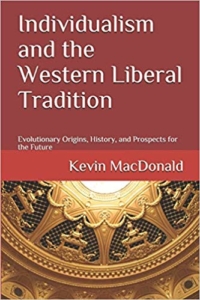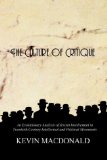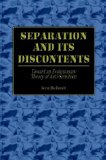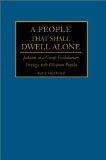Promoting genocide of Whites? Noel Ignatiev and the Culture of Western Suicide
There has been a renewed interest recently in a 2002 article by Paul Craig Roberts, actually the first of two (here is the second), drawing attention to a rather frightening phenomenon at Harvard University: the effort by a professor, Noel Ignatiev, and his journal, Race Traitor, to promote the “cultural and psychological genocide of whites.”
Now that’s an odd choice of words—guaranteed to draw attention to himself and his ideas. Was he in any way also promoting the slaughter or liquidation of whites, as some of his adversaries have suggested? Ignatiev says no. In his words,
We frequently get letters accusing us of being “racists,” just like the KKK, and have even been called a “hate group.” …
Our standard response is to draw an analogy with anti-royalism: to oppose monarchy does not mean killing the king; it means getting rid of crowns, thrones, royal titles, etc….
Ignatiev et al. have developed a story that goes as follows: A bunch of very bad people got together and created a category called “white” to which they belong but people with different colored skin can’t belong. Then they made laws that favored people in the white category, they colluded with other whites to dominate the economic and political process, and they invented baseless scientific theories in which whiteness had its roots in real biological differences.
All Ignatiev’s written material that we’ve seen carries the same odd message with the same extreme wording. He talks about the supposed privileges white people have just because they are in the white category, even though we all know that the only racial privileges in the US are affirmative action laws and various subterfuges that favor non-whites at the expense of whites. These practices result in blacks being overrepresented in high status jobs if one controls for IQ and test scores. And it even results in people like Ward Churchill exaggerating their non-whiteness in order to become beneficiaries of this largesse.
Ignative writes darkly and dramatically of “abolishing the white race,” “genocide of whites,” etc. When pressed, he emphasizes that that he doesn’t really mean killing people who call themselves white. He only wants to destroy the concept of whiteness.
So he’s off the hook, right?
I don’t think so. Try this analogy. We all know that blacks and Jews have a far stronger sense of their racial/ethnic identity and interests than whites. Consider voting: Around 90% of blacks and 80% of Jews vote Democrat. So does that mean that we can say we are in favor of abolishing the black race? Does that mean that we can say we are in favor of the genocide of Jews? And when the forces of political correctness descend upon us for making such statements, can we make everyone happy just by saying that all we meant is that blacks and Jews shouldn’t identify so strongly with their group that they do things like vote the same way. I think not.
Perhaps even Harvard, that bastion of anti-white political correctness, was bothered by Ignatiev’s rhetoric. Ignatiev left Harvard and is now peddling his poison at Massachusetts College of Art. Ignatiev must have felt right at home at Harvard since Harvard is notorious for discriminating against non-Jewish whites: While giving special preferences to blacks and Latinos, only 35% of Harvard students are non-Jewish whites — around half their representation in the population.
Beyond his outrageous rhetoric designed to call attention to himself, it seems to us that Ignatiev is engaging in a clever subterfuge, worthy of the best Talmudic slight-of-hand. The trick involves first adhering to the PC notion that “races” are only “social constructs” as opposed to being creatures whose biology, psychology and culture are inextricably entangled. Coupled with this notion is the other thread running through the ideology of this son of Russian Jewish immigrants, a legacy of his communist days, is an extreme egalitarianism that brooks no social hierarchy, at least one in which “whites” are at the top.
All this has allowed him and his protégés to vent their hatred for whites without being accused of doing so. Their hatred assumes a surface legitimacy because the hated “whites” are just a “social construct.” It’s not really about killing people, so where’s the beef? The “genocide” of whites is not about homicide or suicide; it’s only about getting white people to stop thinking that they are white.
Our interpretation is that Ignatiev’s views are nothing more than ethnic competition. As a leftist Jew, he is part of a long tradition that has opposed white interests and identity — the culture of critique that has become the culture of Western suicide. And like so many strongly identified Jews, his hatred for the people and culture of the West comes shining through.
Notice that if Ignatiev were sincerely opposed to ethnic competition, he would have criticized all sorts of peoples and individuals around the world for thinking of themselves as belonging to a racial/ethnic category. After all, what’s left when there is no more category of whiteness? There will still be people with white skin who can trace their genetic ancestry to Europe but who have lost all sense of belonging to a racial category. And there will still be people who categorize themselves as Jews and blacks and Asians and various subdivisions of Asians. These people will continue to have a sense of racial/ethnic identity and they will continue to act on the basis of this identity. Only whites will be left without an identity and hence without weapons in the racial/ethnic struggle. Why doesn’t he campaign to get rid of these other categories?
And when only whites are left without an identity and hence without weapons in the racial/ethnic struggle, it doesn’t take much imagination to suppose that actual genocide of whites is the next step.
And yes, there is a hard biological reality to racial and ethnic differences. The theory that these are nothing but a social construct is itself a social construct — a social construct in the service of ethnic competition of people like Ignatiev who advance them.
What is so striking in the recent intellectual history of the West is that people like Ignatiev, who doubtless have a strong sense of their own ethnic identity and interests, have managed to pathologize any sense of ethnic identity and interests among Europeans and European-derived peoples — and no one else.
Ignatiev is just another Jewish intellectual in a long line that stretches back to Franz Boas, the Frankfurt School, and myriad others who now dominate the culture of Western suicide. He may call himself a race traitor, but there is every reason to believe that he has a sense of allegiance to his own people and the long history of hostility to the people and culture of the West that is so typical of highly committed Jews. For him, being a race traitor comes easily and naturally; it’s the mother’s milk of socialization as a Jew.
So do read Paul Craig Roberts first essay beginning below, and his second, and ask yourself where cultural critique leaves off and de facto support for, say, blacks murdering whites begins?
By Paul Craig Roberts
Is the multicultural campaign really about diversity? Or is it about stamping out Western civilization and the “white race” itself?
College students will tell you that a university education today is a guilt trip for whites. The purpose is to prevent whites from appreciating and absorbing their own culture and to make it difficult for whites to resist the unreasonable demands (quotas, reparations, etc.) from “people of color.”
To the questions, “who am I, what am I,” the white university graduate answers: “a racist, sexist, homophobic oppressor.”
Neither parents, trustees, alumni, nor the public are aware of the anti-white propaganda that masquerades as education. When someone who is aware tells them, they think the person is exaggerating in order to make a point.
Now comes Harvard educated Noel Ignatiev, an academic at Harvard’s W.E.B. DuBois Institute for African-American Research. Dr. Ignatiev is the founder of a journal, Race Traitor, which has as its motto, “treason to whiteness is loyalty to humanity.”
The journal’s purpose is ‘to abolish the white race.’
At the least, Dr. Ignatiev intends cultural and psychological genocide for whites. It is unclear whether physical extermination is part of the program. A statement by the editors on the web site says that the new abolitionists
“do not limit themselves to socially acceptable means of protest, but reject in advance no means of attaining their goal.” [more]
[Part II, titled “Mugabe Or Harvard: Who Hates Whites More?”, is here.]







